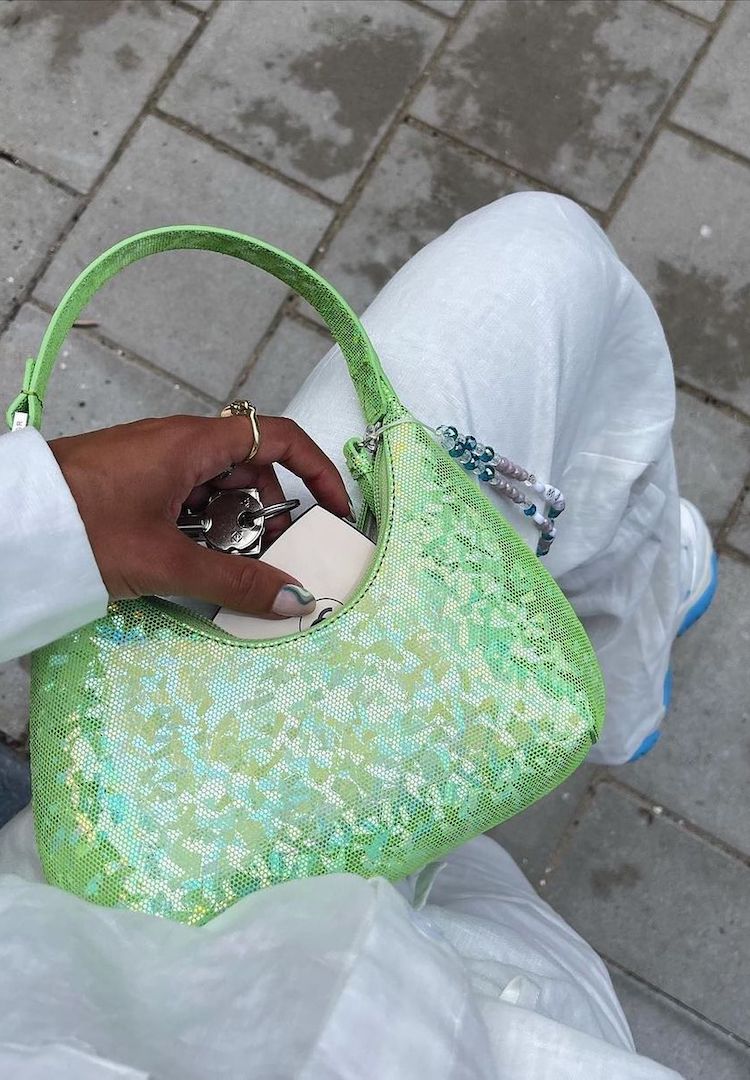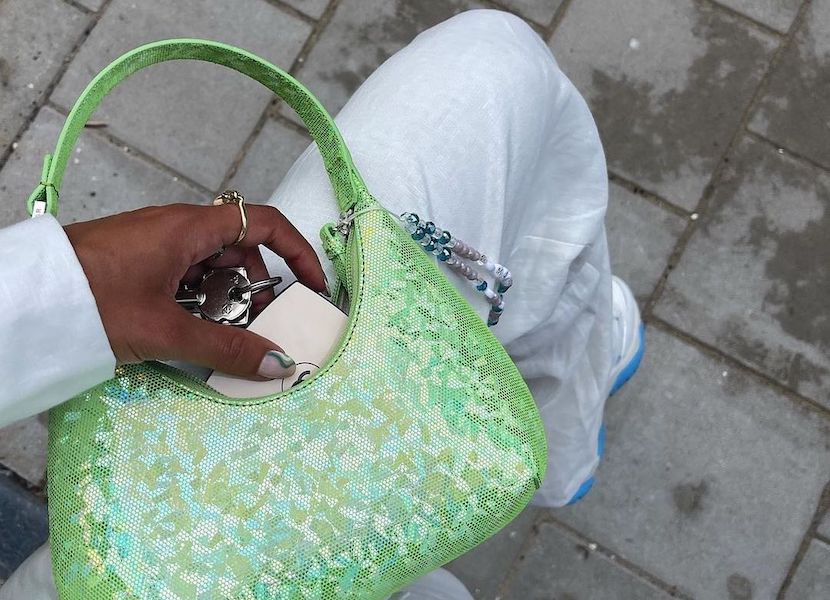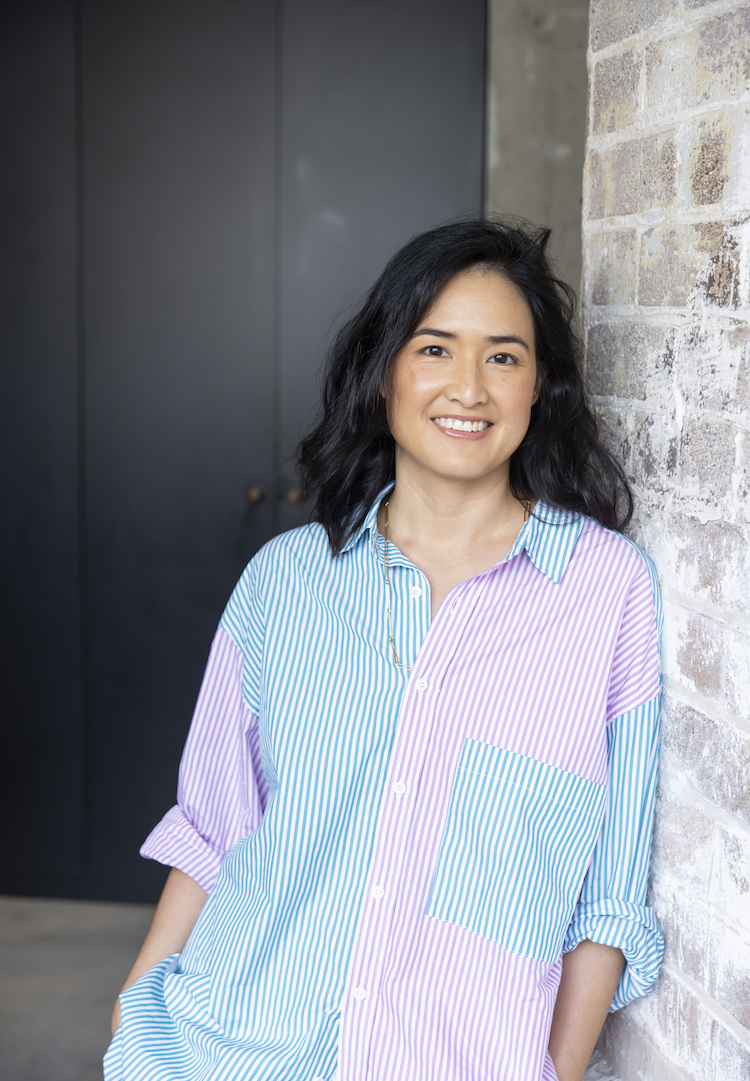What the heck is an ETF? How and why you should consider an investment portfolio
IMAGE VIA @BYFAR_OFFICIAL/INSTAGRAM
WORDS BY MADDY GUEST AND SOPHIE DICKER
Debunking the financial jargon.
Maddy Guest and Sophie Dicker are the co-hosts of You’re in Good Company, an investing podcast striving to disrupt the norms in the finance industry. An Equity Mates Media production, each week they walk through the basics of the share market, break down all that pesky jargon and interview some of the best investors in the business, so that we can all feel empowered to make our own investment decisions. Find their podcast on Spotify or Apple Podcasts.
Have you been thinking about investing, but have no idea where to start? Or what to actually invest in? Let us be your investment guides. I bet we won’t be the first or the last to tell you not to put all your eggs in one basket.
This could apply to a lot of different areas of your life – and investing is no exception. If you’ve thought about or recently started your investment journey, you might be familiar with the term ‘ETF’.
For more on managing your finances, head to our Life section.
Yes, another acronym. There’s no denying it, the finance world j’adores jargon. Sometimes it feels like the industry was designed to be confusing – but don’t be deterred. Armed with a few simple facts, you’ll be on your way to feeling confident in managing your finances and achieving financial freedom.
Before we go any further, let’s break down the acronym. ETF (note, not EFT, which is something you might catch yourself saying) stands for ‘Exchange Traded Fund’. This baby is your friend when it comes to building your investment portfolio.
The best analogy we’ve heard is that an ETF is like a box of chocolates. Imagine the classic box of Favourites sitting in the middle of the table at a family barbeque. Your gran has probably bought the box because she knows there’s a variety in there for everyone’s tastes – your uncle is into the Cherry Ripe, your sister is a Turkish Delight girl and Dad loves the classic Caramello. Your gran is hedging her bets and taking less risk by buying a box with an option for everyone.
We can apply the same idea to investing: the chocolates are companies and the box is an ETF. An ETF reflects a bunch of different shares (or companies) bundled together to be bought and sold on the stock exchange as one single entity. So in the same way you can walk down to the local supermarket and grab a single box of Favourites, you can jump onto your brokerage app and purchase one box of shares – an ETF.
Let’s contextualise
A good example for Australian investors is the ASX 200 ETF. This bundles together the top 200 companies in Australia – think Commonwealth Bank, Afterpay, BHP and CSL (plus 196 more). You make a $1,000 purchase of this ETF and get exposure to 200 companies, all within one trade. The alternative is buying into each company individually.
Not only would this be 200 trades (and 200 brokerage fees) but it would also require a lot more money given that most platforms have a minimum trading amount of around $500. Quick math: 200 companies multiplied by $500 – do you have $100,000 spare?
The next generation of investors is fully embracing the ETF market. Research shows that in the past 12 months, the number of ETF investors in Australia has doubled to one million. The majority of these are young investors new to the share market. Why is this?
One-stop-shop
ETFs provide access to multiple companies and quick diversification. We diversify to spread our risk. For example, if you invest in just one bank and the bank underperforms that year, your portfolio performance will reflect that.
But if you invest in an ETF, if a couple of companies are underperforming, they will likely be overrun by the majority of companies that aren’t – leading to overall growth. So just like Gran buying the Favourites to keep the whole family happy, an ETF kind of does the same.
Follow your interests
Another reason for ETF popularity is the rise of thematic investing, meaning investing in a particular trend. Over the past year, some of the megatrends that have emerged include sustainable investing, artificial intelligence (AI), COVID winners (think Zoom), cloud computing, video games and clean energy.
Younger investors are shunning the traditional portfolio construction of stock picking, opting for investing in broader themes via ETFs instead. Forget researching and picking a single solar company – through ETFs you can make one trade and gain exposure to solar and wind energy, green transportation, water conservation, waste improvement and sustainable products.
When it comes to investing, what and why you buy depends on your specific goals, risk profile and investment horizon. To get started, there are a couple of factors to consider.
Fees
ETFs are managed by providers and they charge a management fee for their service. So when it comes to fees, how much is too much? The average fee range for an ETF is between 0.01 and 1 per cent.
To ensure you’re not overpaying, when you find an ETF you’re interested in, do a quick Google to compare similar ETFs from different providers. For example, if you’re interested in a sustainable ETF, Google sustainable ETFs and compare the fees of different providers.
Concentration risk
Concentration risk refers to holding multiple ETFs that invest in the same company. For example, in your portfolio, you might invest in a technology ETF (because it’s a theme that interests you) and an ETF that tracks the top 100 US companies (because you want international exposure).
Chances are, both of these ETFs invest in Facebook and Microsoft. In this case, not only are you paying two separate fees to hold the same companies, but it means that if they perform poorly, the large concentration (i.e. a large percentage of your portfolio) may negatively impact your overall returns.
On the flip side, you might want to increase your exposure to Facebook and Microsoft, as they’re two of the world’s largest and arguably most impressive companies. What’s important is that you decide to do this consciously. When researching which ETFs to buy, take a look at the holdings (the underlying investments), so you know what the overlaps are (if any). And just like that, you’ve done it! Another finance acronym sorted.
Wondering what’s next? If you’re over being told to stop buying avocados or ordering Uber Eats to get in control of your future finances, ‘You’re in Good Company’ is the podcast for you. You can tune in every Tuesday on your favourite podcast platform.










